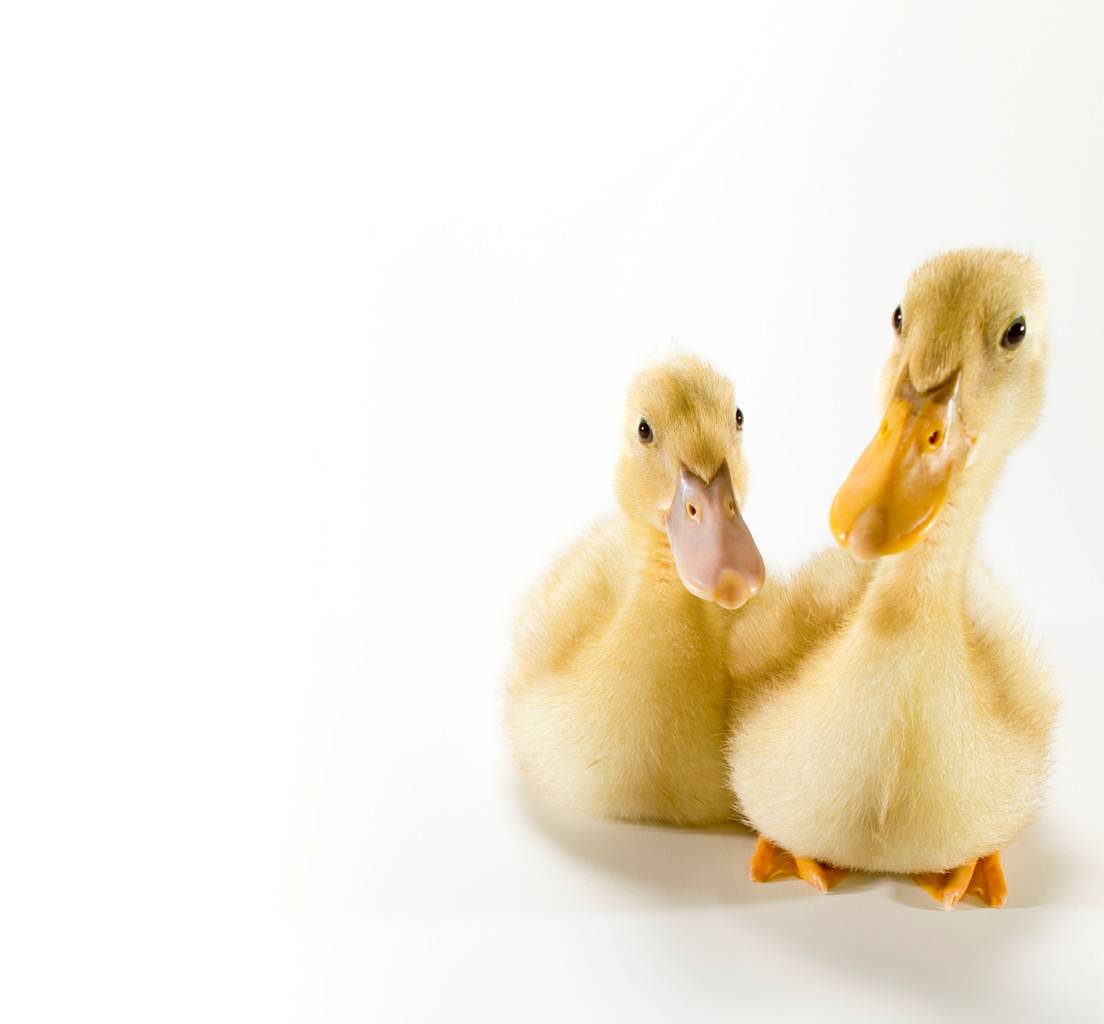Department of Health
Stay Healthy During Easter Season
Adults should think twice before giving children chicks and ducklings for Easter.
This article is 12 years old. It was published on March 1, 2013.
Peep, chirp, quack!
Why parents should think twice before giving baby birds for Easter
Easter brings to mind brightly colored eggs, baskets full of candy, and large chocolate bunnies. Traditions associated with the Easter season are enjoyable for children and adults alike. However, some Easter traditions are of particular concern for children, placing them at risk for serious illness. Baby animals, including baby chicks and ducks, are sometimes given as gifts or put on display at this time. Because they are so soft and cute, many people do not realize the potential danger baby chicks and ducklings can be to small children. Young birds often carry harmful bacteria called Salmonella. And, each spring some children become infected with Salmonella after receiving a baby chick or duckling for Easter.
Harmful bacteria carried in the chick's and duckling's intestine contaminates their environment and the entire surface of the animal. Children can be exposed to the bacteria by simply holding, cuddling, or kissing the birds. Children are most susceptible to infection because they are more likely than others to put their fingers into their mouths and because their immune systems are still developing. Others at increased risk include persons with HIV/AIDS, pregnant women, the elderly and other immunocompromised persons.

1. Why should I not buy chicks and ducklings as Easter gifts?
Each spring there is an increase in demand from hatcheries and farms to supply young animals for Easter. To meet the demand, chicks are specially hatched in large quantities and are shipped around the country. Hatching and shipping many animals at one time increases the stress upon the chicks and ducklings and makes them more prone to disease. The likelihood of shedding Salmonella bacteria and infecting others increases.
2. How is Salmonella transmitted?
Children become infected by putting their fingers or other things contaminated with chick stool into their mouths. Chicks and ducklings often do not appear dirty but may have feces on their feathers and beaks - places where children are likely to touch.
3. How do I know if a chick or duckling has Salmonella?
Many chicks and young birds carry Salmonella in their feces. It is difficult to know if chicks are carrying Salmonella because they will not usually show signs of illness.
4. How do I reduce the exposure of young children to Salmonella from chicks and ducklings?
a. Do NOT purchase live animals as Easter gifts. Give toy stuffed animals instead.
b. Do not let children under 5 years of age handle baby chicks or other young birds. Keep them from coming into contact with packages in which chicks or ducklings arrive.
c. If anyone touches the chicks or ducklings or their environment, make sure that they wash their hands immediately afterwards. Pacifiers, toys, bottles or other objects should not touch the baby birds or their enclosures. If these objects do become contaminated, wash them with warm soapy water.
d. Do not allow anyone to eat or drink while interacting with birds or their environment. Keep the bird area separate from areas where food and rink are prepared or consumed. Do not allow chicks or ducklings on table surfaces or places where food will be prepared or eaten.
e. Talk to your veterinarian, nurse or doctor about possible risk factors.
Salmonellosis (sal-mon-el-OH-sis) is a disease caused by the bacterium Salmonella. Most people have diarrhea, fever, and stomach pain that starts 1 to 3 days after they ingest the bacteria. These symptoms usually resolve after 1 week. Other symptoms might be nausea, chills, headaches or general achy feeling. Young children, the elderly and other immunocompromised persons may have a more severe infection. Occasionally, infections are so severe that people have to see a doctor or be hospitalized.
6. How are Salmonella infections diagnosed and treated?
Diagnosis is obtained from culture of Salmonella from the stool. Treatments are usually supportive, consisting of fluid therapy and pain relief. Antibiotics should only be used to treat severe cases of illness because antibiotics may prolong the disease and many strains of Salmonella are resistant to antibiotics.
7. Are there any government restrictions concerning the sale of chicks?
At this time the federal government has no restrictions concerning the sale of chicks and ducklings. State governments have recognized the risk of Salmonella to young children and have passed restrictions for pet stores and local agencies that prohibit the sale of baby chicks around Easter.
8. Where can I find education materials about the risks of chick associated salmonellosis?
Washington Department of Health and the Zoonoses Education Coalition have created materials for download and printing.
Washington Department of Health has created a poster, flyer, and stickers that say, "After you touch a duck or chick, wash your hands so you don't get sick."
Their materials can be found at the following website: http://www.doh.wa.gov/ehp/ts/Zoo/salmonellachick.html
The Zoonoses Education Coalition has also created a poster and a sticker.
Article reposted from U. S. Centers for Disease Control and Prevention's website: http://www.cdc.gov/healthypets/easter_chicks.htm
-
Department:
Department of Health
-
Topic:
Health
